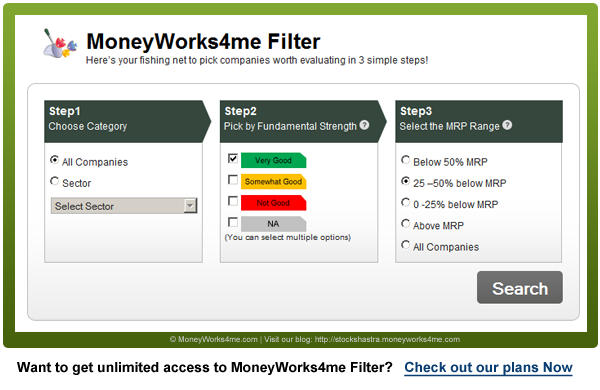How to Identify an Undervalued Stock
Post on: 21 Июнь, 2015 No Comment

About
It’s not easy to find a great stock. In almost every case, investors have already priced good and bad news about the company into the stock’s share price. But every once in a while, the market misprices a stock. So how do you find these hidden gems?
A company’s price-to-earnings ratio, or P/E, is one of the fundamental metrics that every stock picker should know. It’s is a great place for every investor to start when trying to find undervalued stocks to purchase.
How to Calculate a P/E Ratio
To calculate a company’s P/E ratio, simply divide the share price of a company’s stock with its earnings per share. (For an apples-to-apples comparison, be sure to calculate the ratio on a per-share basis.)
For example, if a company has a share price of $40 and earns a profit of $2 a share, its P/E ratio is 20. If the company’s price per share were to increase to $60 and its profits remained the same, it would see its P/E ratio jump to 30.
P/E Ratio Shows You If a Company’s Stock Is Undervalued
A company’s P/E ratio is a leading indicator of an undervalued stock. A lower P/E ratio shows investors that a lower-priced stock is earning a larger profit. A higher P/E ratio indicates that a stock is more expensive or might not be earning a lot of profit when compared to the price of a share of its stock.
P/E ratios are relative, and should only be compared to those of other companies within the same industry or sector.
So, it isn’t fair or even accurate most times to, for example, compare the P/E of a technology company with that of a consumer products company, as these industries typically have different P/E ratio levels.
Technology companies frequently command a higher price for their stock, despite the lack of big profits. It isn’t unusual to see some technology companies with a P/E of 40 or more. Conversely, consumer staples and blue chip companies often have a lower P/E. It’s important to compare companies within their own industry to identify buying opportunities.
Compare Companies Within Industries for the Most Insight
One of the best ways to find a stock to invest in is to compare a company to its industry average. You can easily find the P/E ratio for industries and even entire indexes online. They will provide you with a baseline for comparison.
For example, Dr. Pepper Snapple Group (DPS ) had a P/E ratio of 15.45 at yesterday’s closing bell.
Dr. Pepper’s largest competitor, the Coca-Cola (KO ), has a P/E Ratio of 20.68. National Beverage (FIZZ ), the maker of Shasta and other popular sodas, has a P/E ratio of 21.96. And, on average, the non-alcoholic beverage industry has a P/E ratio of approximately 20.7.
So what do these numbers tell us? Solely using the P/E ratio as the only metric, Dr. Pepper Snapple Group looks undervalued compared to its peers. Dr. Pepper’s current share price is $47.72. If the company had a P/E ratio comparable to Coca-Cola’s 20.68, then investors should actually expect the price of Dr. Pepper’s stock to be closer $63.90 a share.
This is a quick example to show you how to use a company’s P/E ratio to find potentially mispriced stocks. Investors compare companies to others in the same industry. It shows a potentially undervalued stock. While there are a few other characteristics that make Dr. Pepper and Coca-Cola a little different from each other, the P/E ratio presents an opportunity for investors and warrants more investigation.
When you examine a company’s P/E ratio, you can quickly identify many price inequalities. It’s a great tool and should be the first metric investors use when looking for a new stock.
Do you use the price-to-earnings ratio to find great companies to invest in? Is it the first metric you scrutinize when buying? What other key metrics do you look at to find a great stock?
Disclaimer: I currently own shares of both Dr. Pepper Snapple Group and the Coca-Cola Company. I continue to purchase new shares each month using dollar cost averaging through both companies’ dividend reinvestment plans .
Hank Coleman is a financial planner and the publisher of the popular personal finance blog Money Q&A , where he answers readers’ tough money questions. Follow him on Twitter @HankColeman .














